I grew up with Dachshunds. They are smart fierce dogs bred for hunting wild rabbits and badgers in their underground dens. I learned the phrase “weaseling a dog” somewhere along the line… Apparently at some point, the practice for those that wanted to really hone their Dachshund’s mindset and ensure winning the dog vs. varmint battles, was to dump said dog and example varmint into a barrel together and close the lid. The beast that came out was either the most aggressive varmint dog it could possibly become, or, um, it wasn’t…
Thankfully, our family hosted a series of super pampered mini doxies that encountered neither varmint nor barrel.
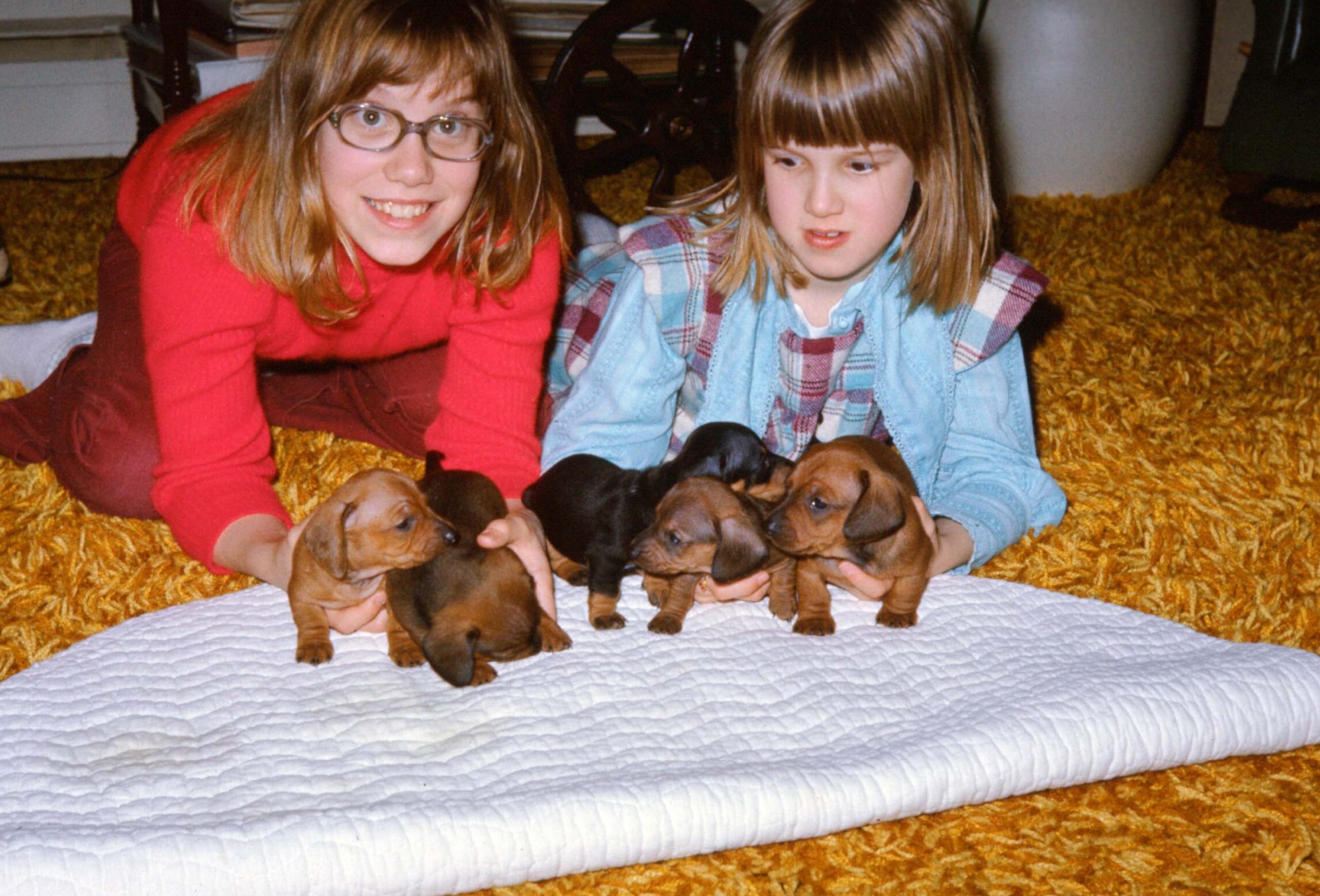
Spring Fertility Festivals celebrated by cultures across Europe perhaps haven’t been as lucky as our childhood dogs. Ancient traditions with Native / Pagan / Shamanistic roots have historically been “weasled” in barrels of colonization, trade, and spreading Christianity**. Did the ‘doxie’ or the ‘varmint’ win? In some cultures, the outcome is an unmistakably religious tradition (Easter), in other cases, an unabashedly hedonistic fertility ritual (Mardi Gras, Carnival), in Finland’s case it turns out to have been neither, and both. In a particularly Finnish, ‘Sisu! Let’s keep both old and new’-meets-‘we value workers and education’ outcome, Vappu, which is the most festive Spring Holiday observed here, comprises a 2+ day event (April 30th, May 1st) celebrating a unique blend of pre-Christian Spring fertility rituals, an honoring of Saint Walpurga , May Day (although not the maritime distress kind jokingly used above, think Labor Day), and the annual novation of students through another year of schooling. The students take it further (of course) than the general public, and a week or more before the actual event are creating special publications and hosting parties and generally ‘studenting’ hard ;). I think Vappu must be the most uninhibited festival celebrated nationally here in Finland.
Ancient Finns celebrated Hela (think Beltane if you’re more familiar with Celtic Paganism), which marked the end of winter, the beginning of the farming season, and an opportunity to eat, drink, and be merry after being cooped up for months during the long & difficult winter. I’ve read that people enjoyed singing, dancing, wearing bells (to encourage cows to produce more milk), lighting helavalkeat (bonfires), going to sauna, and drinking mead. Sounds like a Hela-va good time :). The holiday has also picked up a bit of what had been an ancient Roman festival, Floralia celebrating the Goddess Flora, with lots of beautiful flowers and balloons in the colors of spring.
As Christianity took root in Scandinavia and in Finland, Hela got ‘weasled’ with the celebration of Saint Walpurga (Valpuri) in the form of Walpurgis Night (Valpurinyö). It has also been known as Taikayö (the magic night) and Noitayö (witches’ night) because it was believed that the night of transition between April and May meant evil spirits were at the height of their power. Vappu kept both the sinners and the saints 😉
In current times, Vappu is a fantastic mix of all of the above: everyone enjoying warmer weather and celebrating spring with family, food, drink and picnics, and University students marking their progress through another school year. Vappu is a Flag Day and a National Holiday (workers have May Day off), and now that I’ve been here for the majority of this past calendar year, I can report that by my completely unscientific measure, it is the rowdiest day of the year here in Oulu (outside of Suomi ice hockey championships, of course). I went to both a K-Market and a Prisma today and both were packed… I had wondered how covid-19 distancing restrictions would affect Vappu this year, as authorities have requested that people not gather in the normal Vappu locations. On my walk tomorrow on May Day (vapaapäivä), I’ll check out the areas that I commonly walk by: the kauppatori (market square), the waterfront near the Theatre and Library, and Åströminpuisto (Åström Park) and report back. The pics I’ve included in this post are from last year (2019).
As far as Vappu food traditions: Drink sima, a typically homemade lemon flavored sparkling mead (recipe coming), and eat tippaleipä (carnival style funnel cakes, ‘drip bread’) and munkki (cardamom flavored yeast donuts rolled in sugar), named because they are round like the ring of hair on a monk. Family picnics boast hot dogs or grilled makkara (sausages) and potato salad and plenty of the Vappu donuts and sima. I would imagine that most Finnish families make their own Vappu treats, but some are of course available commercially. These photos are from my grocery visit earlier today:
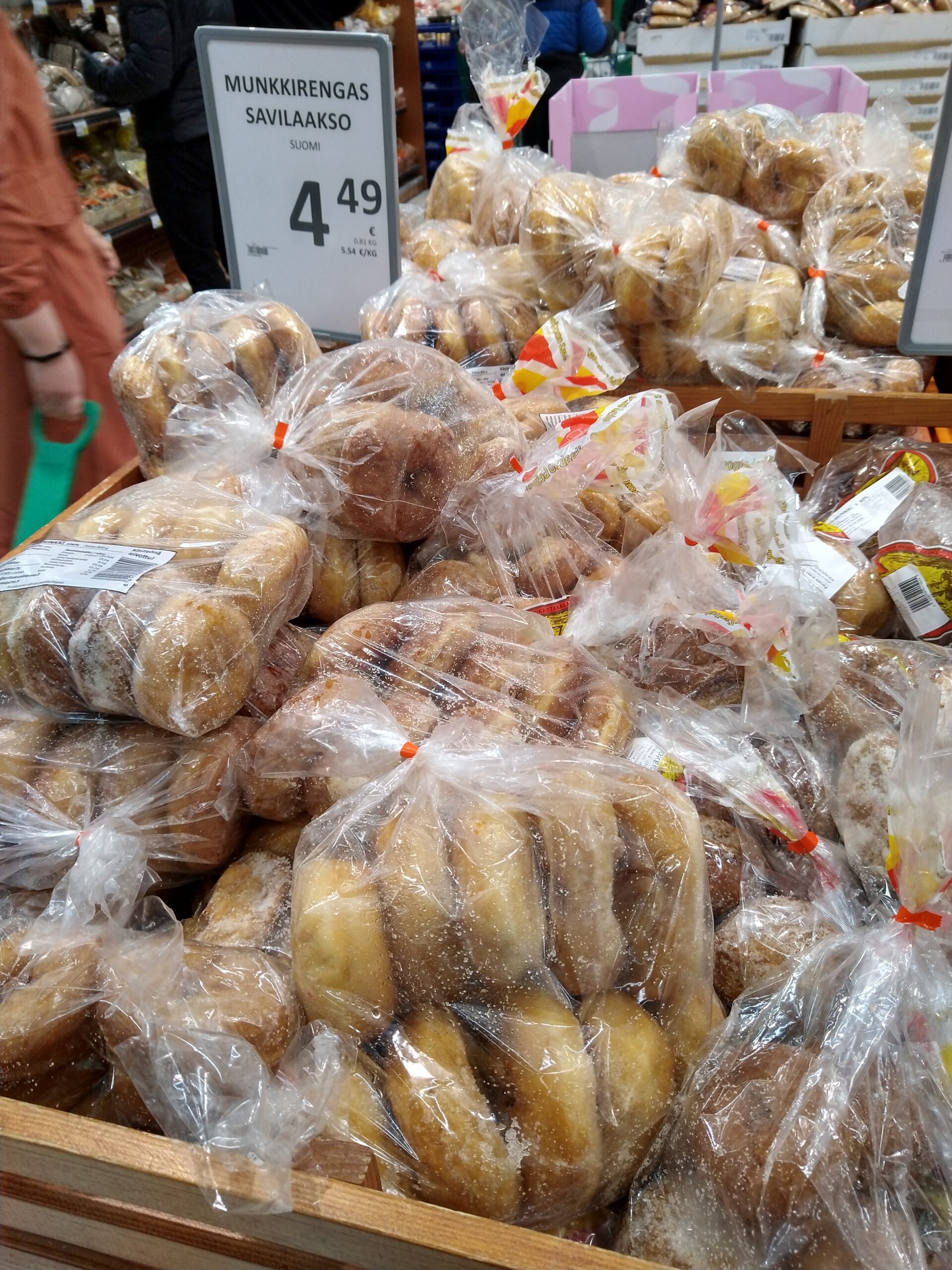
bags of munkki 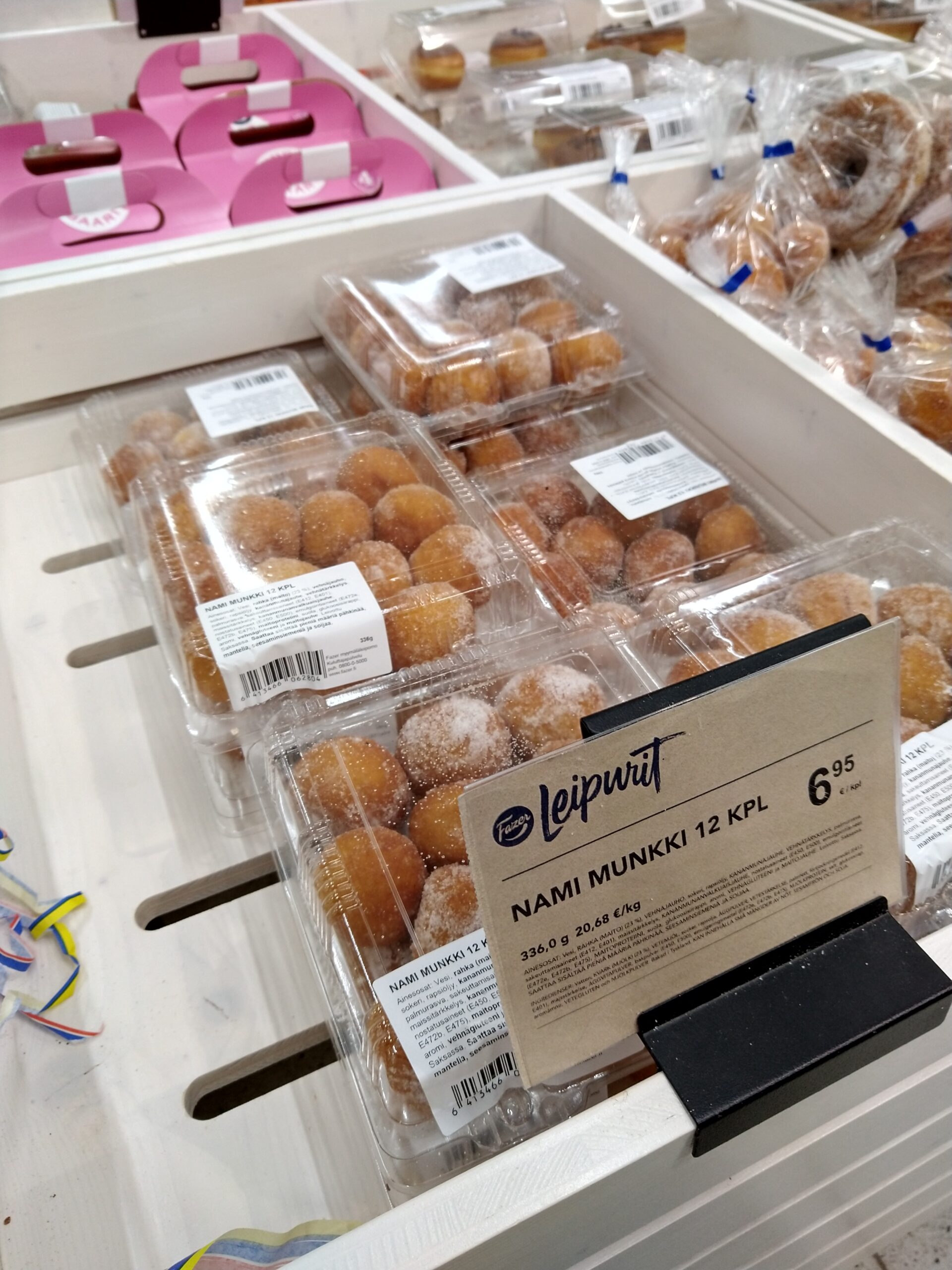
origin of
DD Munchkins?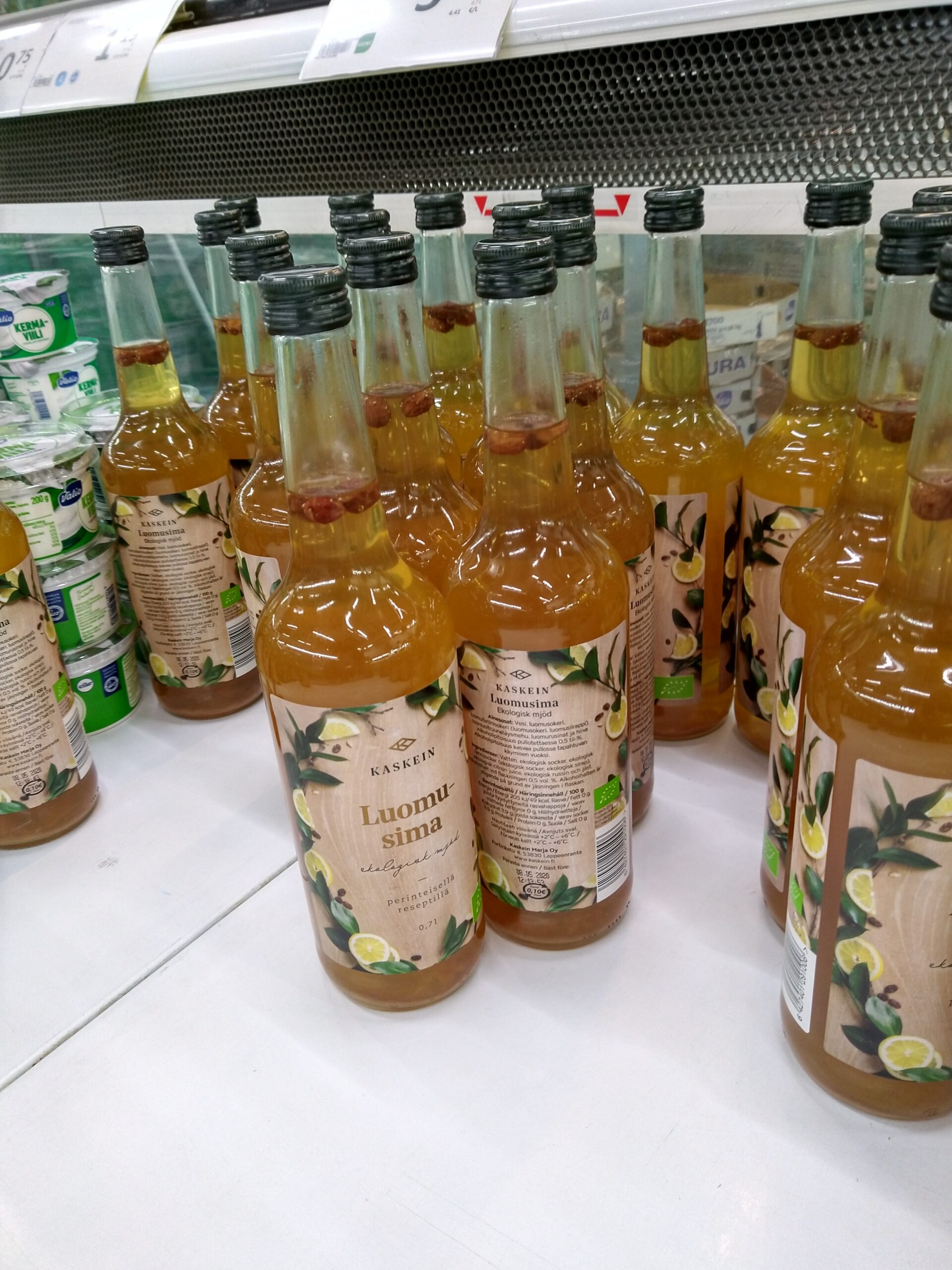
Organic Sima 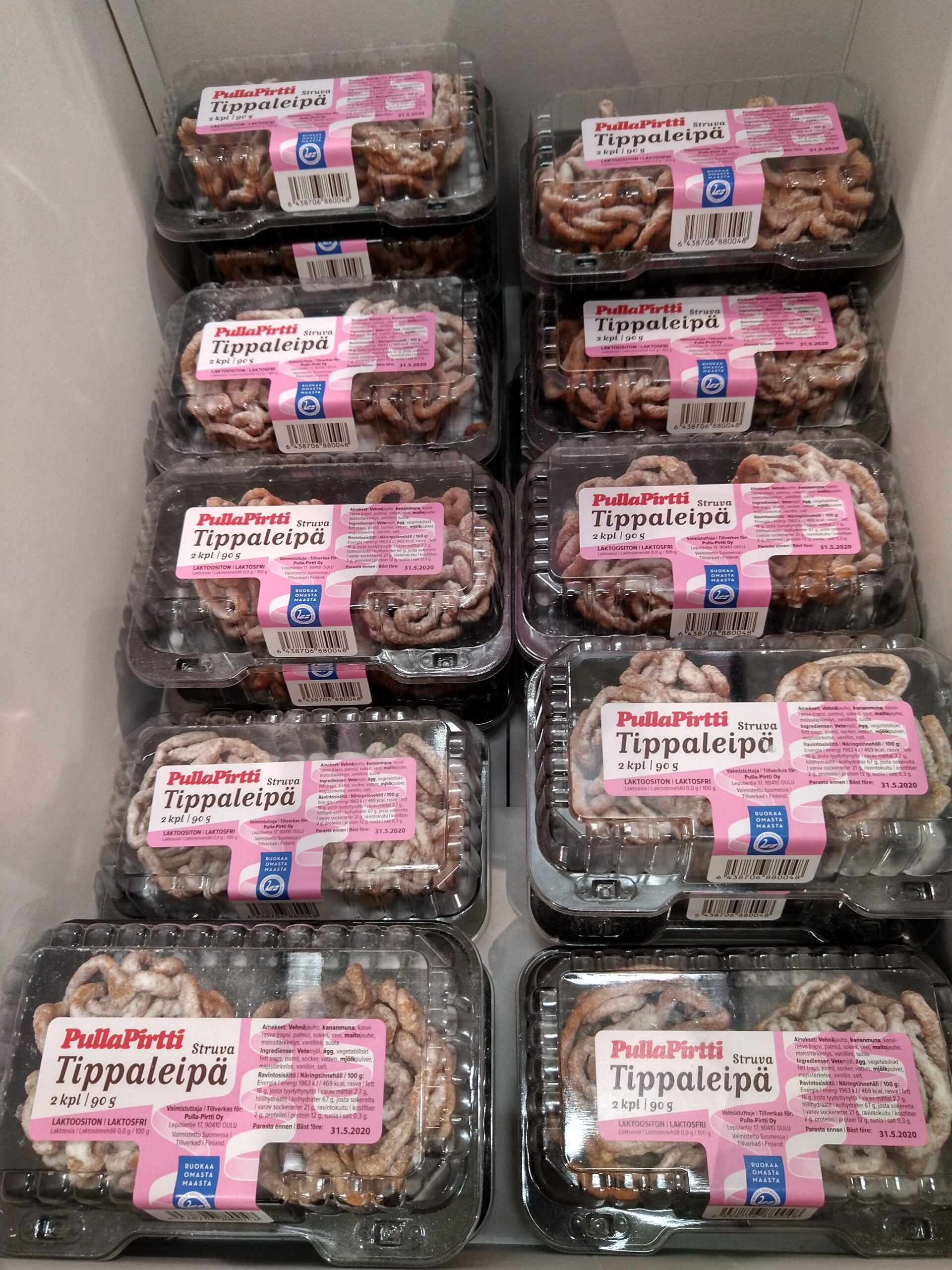
‘Drip Bread’
The students and group gatherings give Vappu its unique aesthetic and party vibe! In Finland, students earn items of clothing in addition to diplomas… the most important items appear to be the famous white ‘sailors’ cap (Ylioppilaslakki) and the colorful, patch-laden boilersuit (opiskelijahaalari), or coverall, they wear with the top half folded down at the waist. The white caps are earned after high school graduation and are kept for life. Everyone wears the cap they earned on the two Vappu days, older people have yellower caps (ain’t that the truth 😉 ). In terms of the coveralls, each University and each major have their own color schemes, and patches are earned at various events throughout the academic year. More patches signify further education and perhaps more extracurriculars… You’ll see students clumped proudly in groups of oranges here, and blues there, etc. Fun vivid colors and students who are very obviously celebrating the end of a difficult year in academia. It is really quite a scene, and the energy is palpable! The crowds even dress important statues with their own Ylioppilaslakki, i.e. in Helsinki, it’s a tradition to “cap” Havis Amanda, a statue in the city center. It reminds me of our own Chicago Art Institute lion pair donning Cubs baseball caps after the World Series win in 2016!
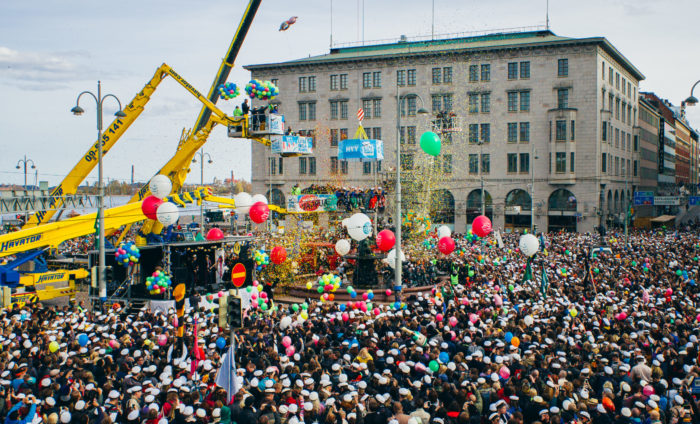
In Helsinki they top the statue of Havis Amanda with the ylioppilaslakki for Vappu (not 2020!)
(c) Jussi Hellsten
Here are a few scenes I snapped while I was out walking around during Vappu in Oulu last year (2019):
One particular right of passage here in Oulu, is that young engineering students, after finally completing their freshman year, take a dip in the water at Åströminpuisto in the afternoon of April 30th, after which they are finally considered official engineering students (Teekkari). Makes me glad that I finished my engineering education elsewhere. Brrrrrr!
I find Vappu to be a little like letting out a long held breath and turning on a colorful light. FINALLY, we can go outside and let loose a bit. It’s uniquely Finnish: both family friendly and quite a bit rowdy. It’s all good. Welcome to springtime here in the North…
Hauskaa Vappua!!
**Side Note: I could quite possibly be the only one whose mind conjures the notion that Vappu represents a “weaseling” of traditions. Please don’t let my dark analogy leave a lasting impression. Vappu is beautiful and colorful and tasty and fun and is genuinely welcomed relief after the long cold winter here. 🙂
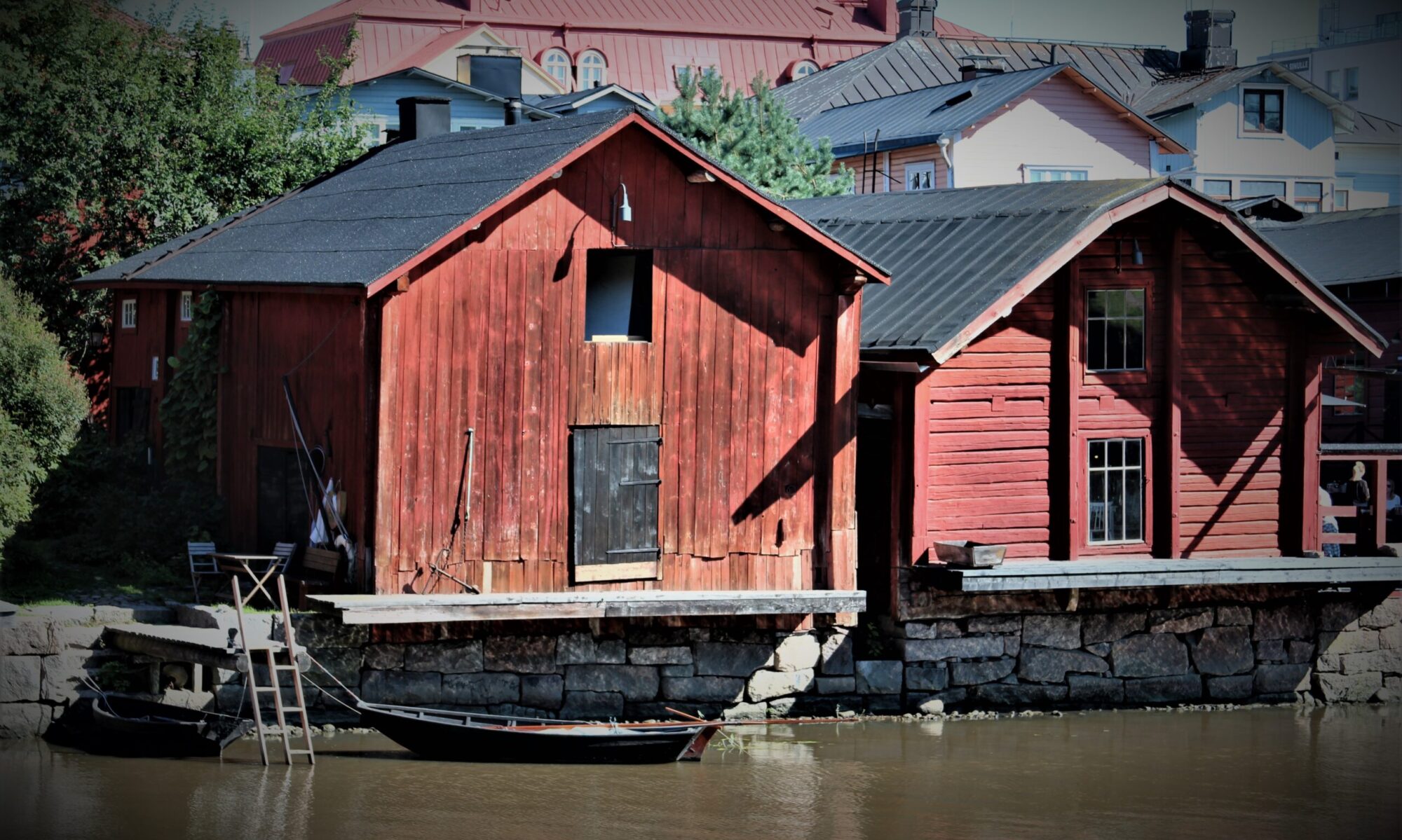
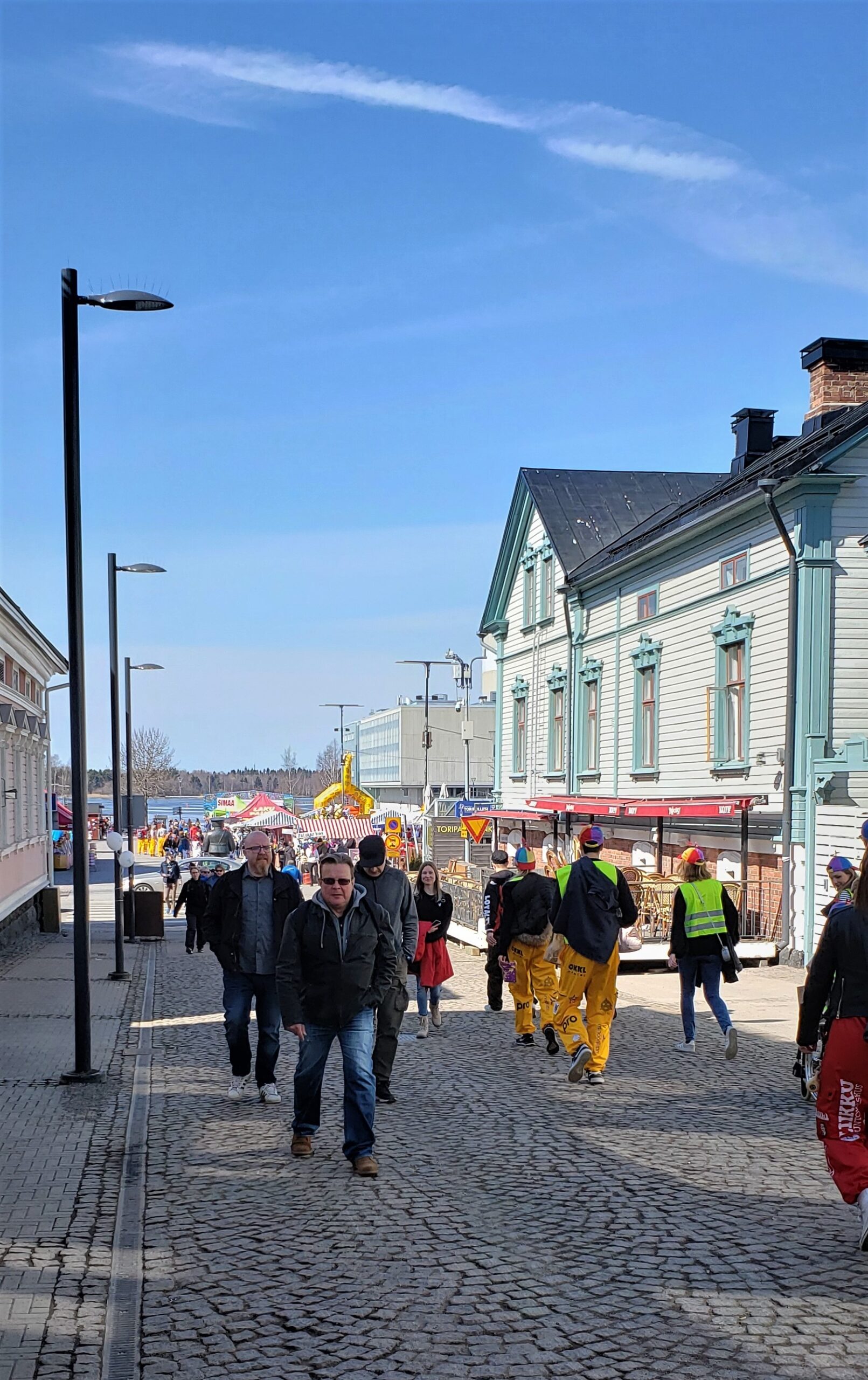
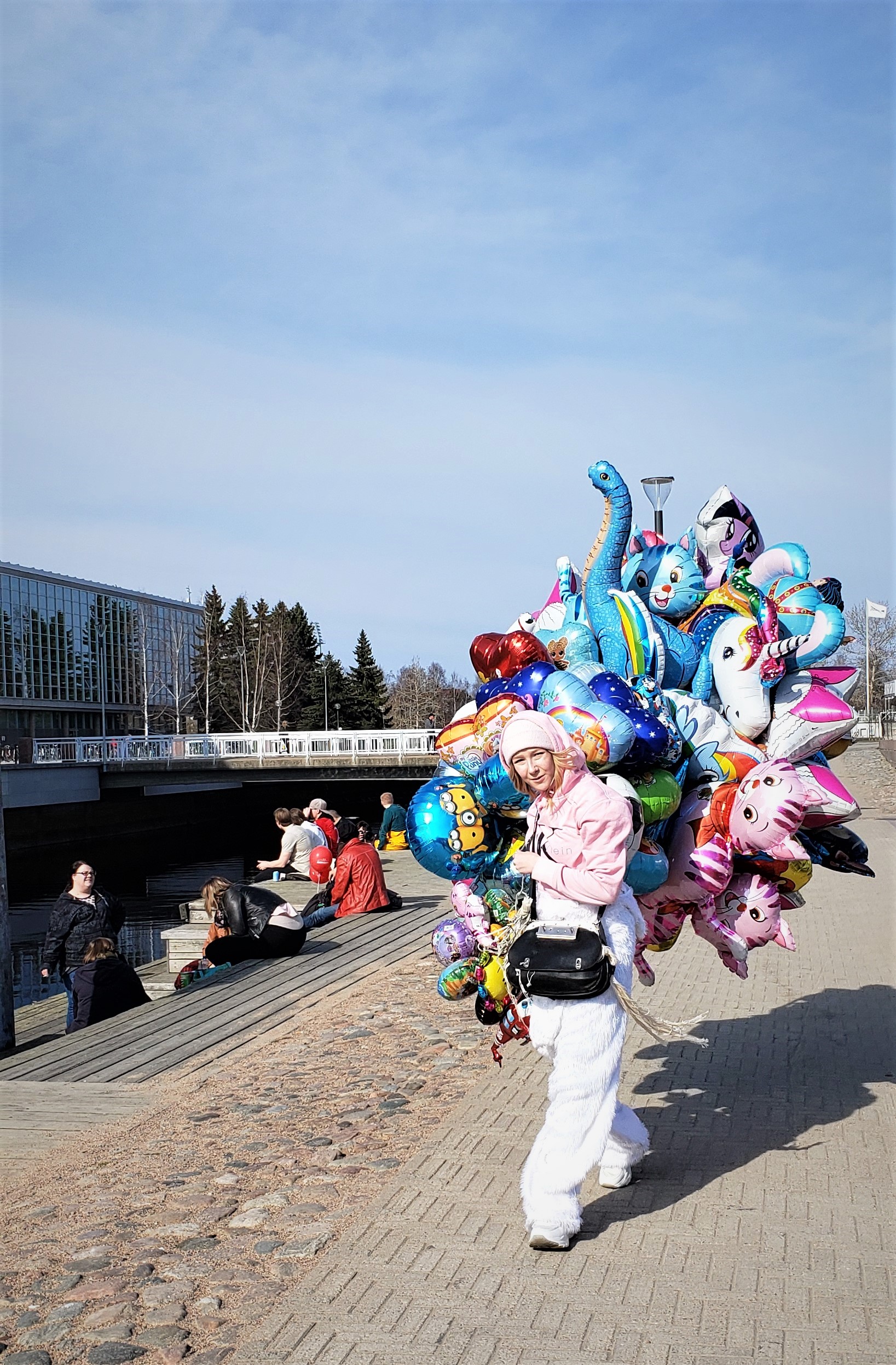
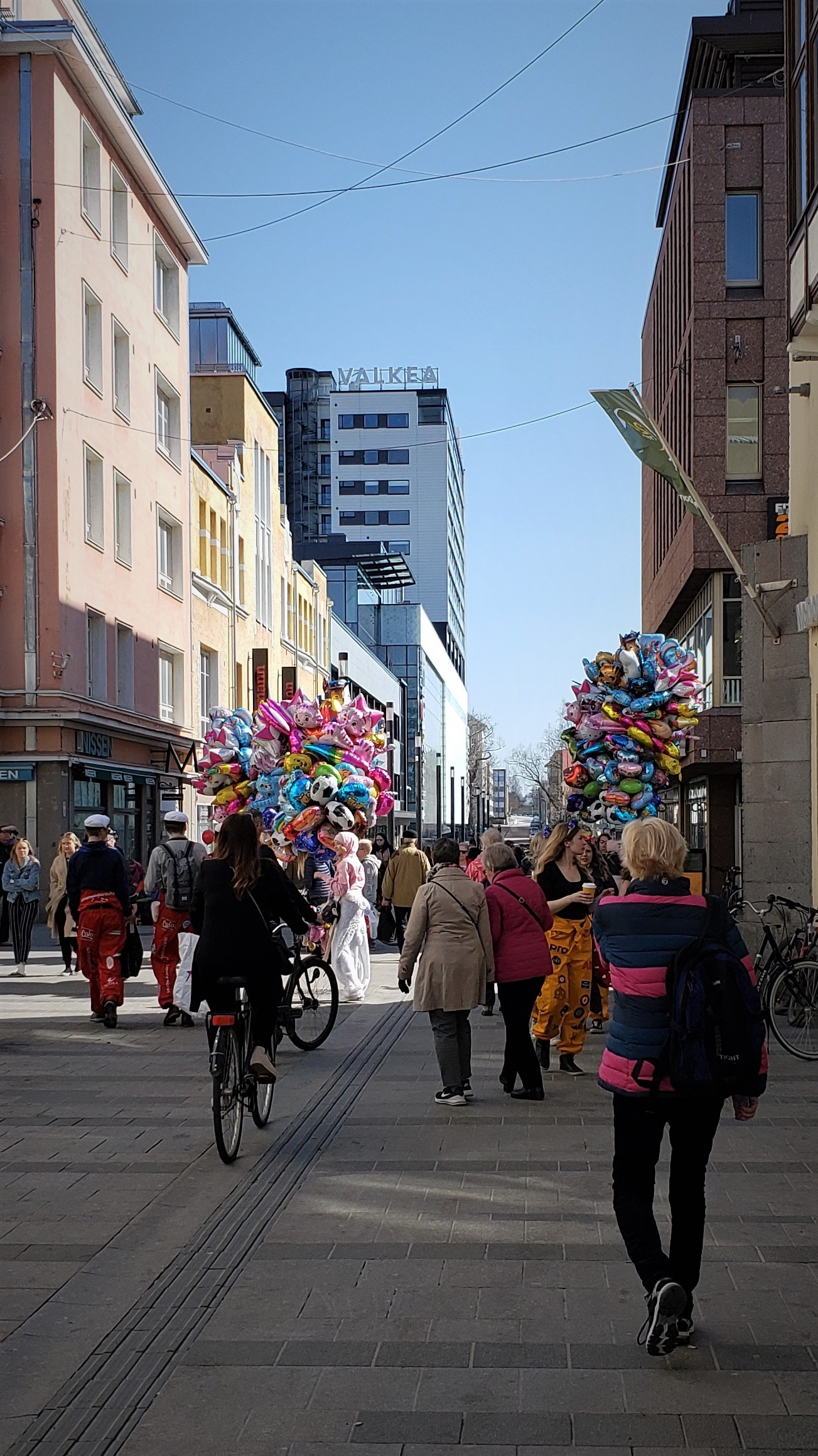
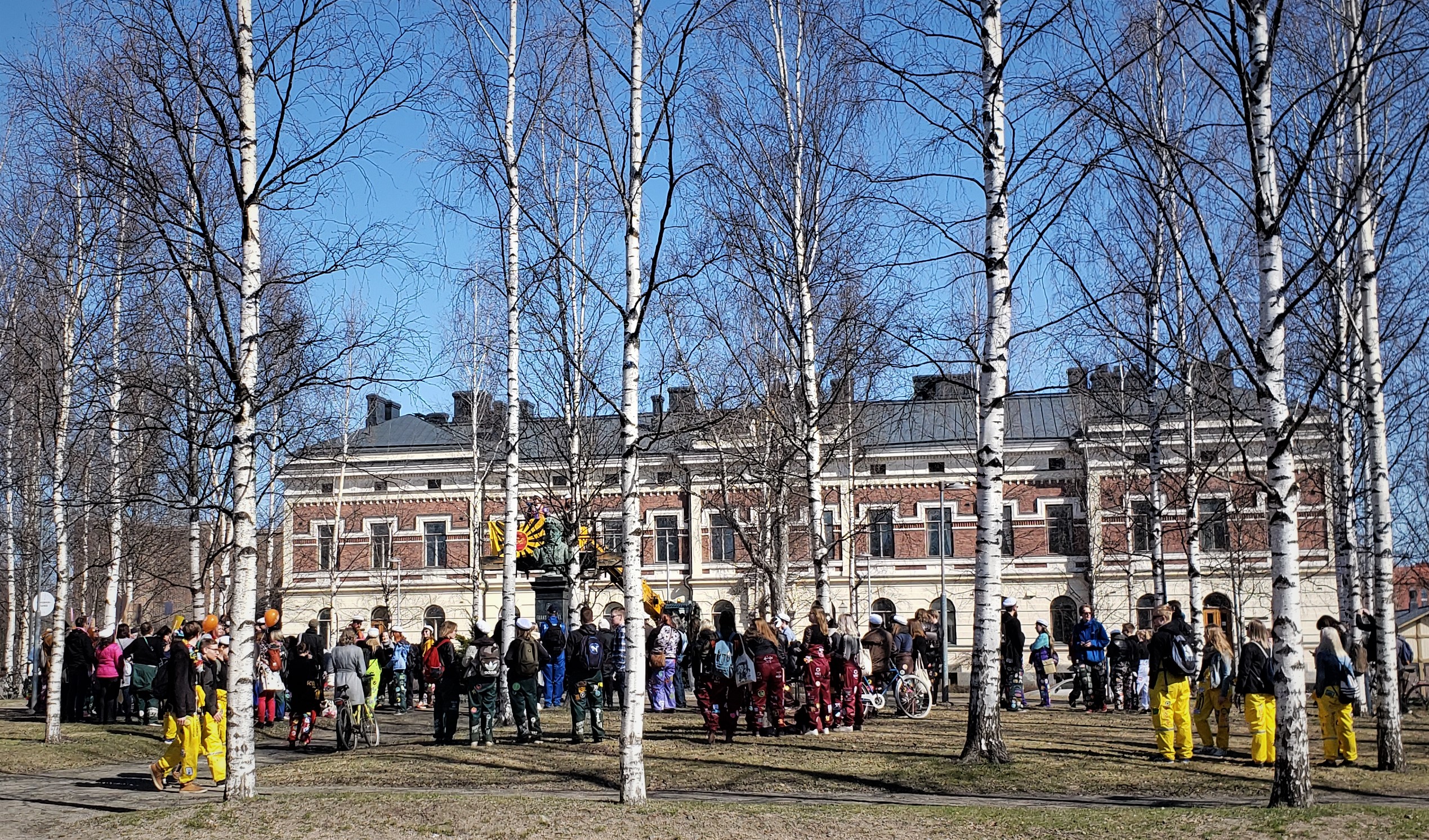
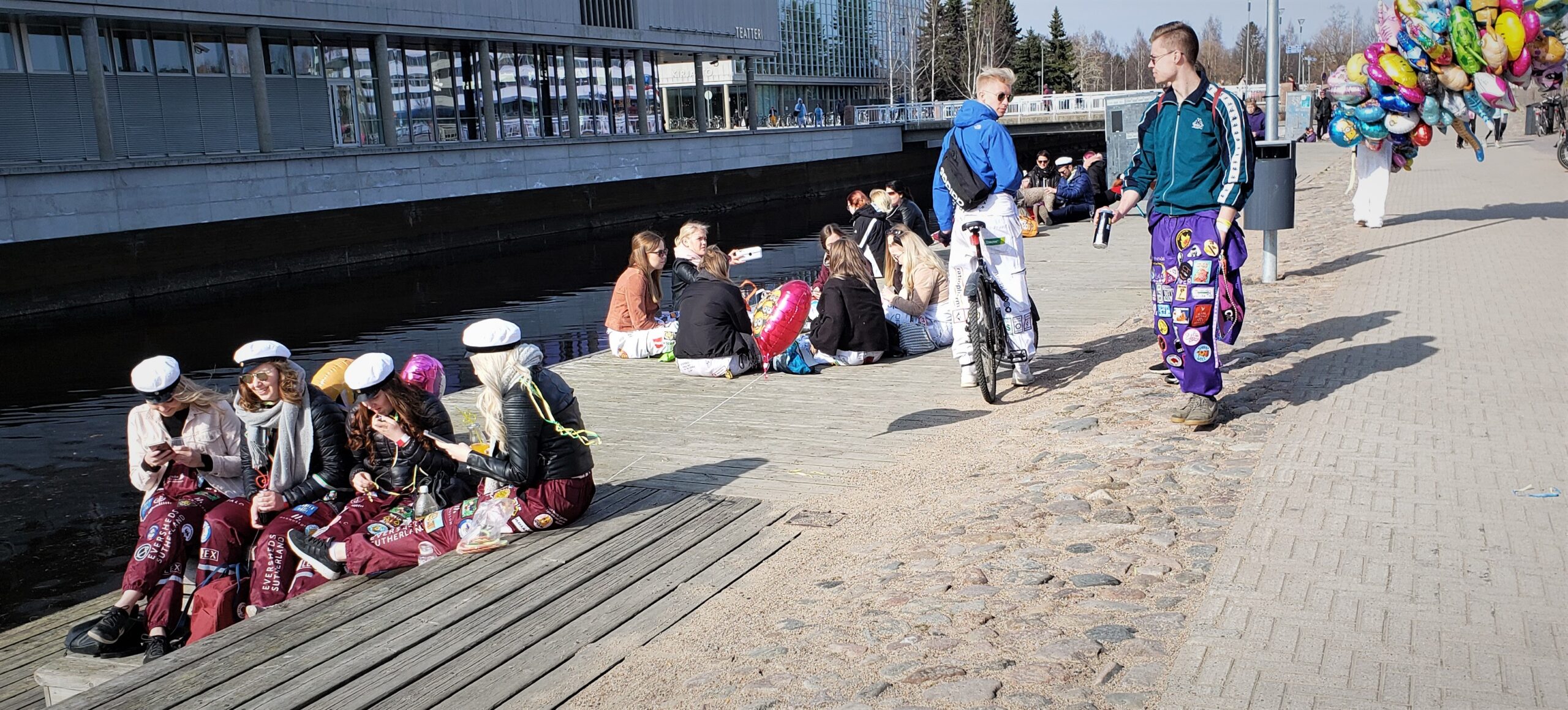
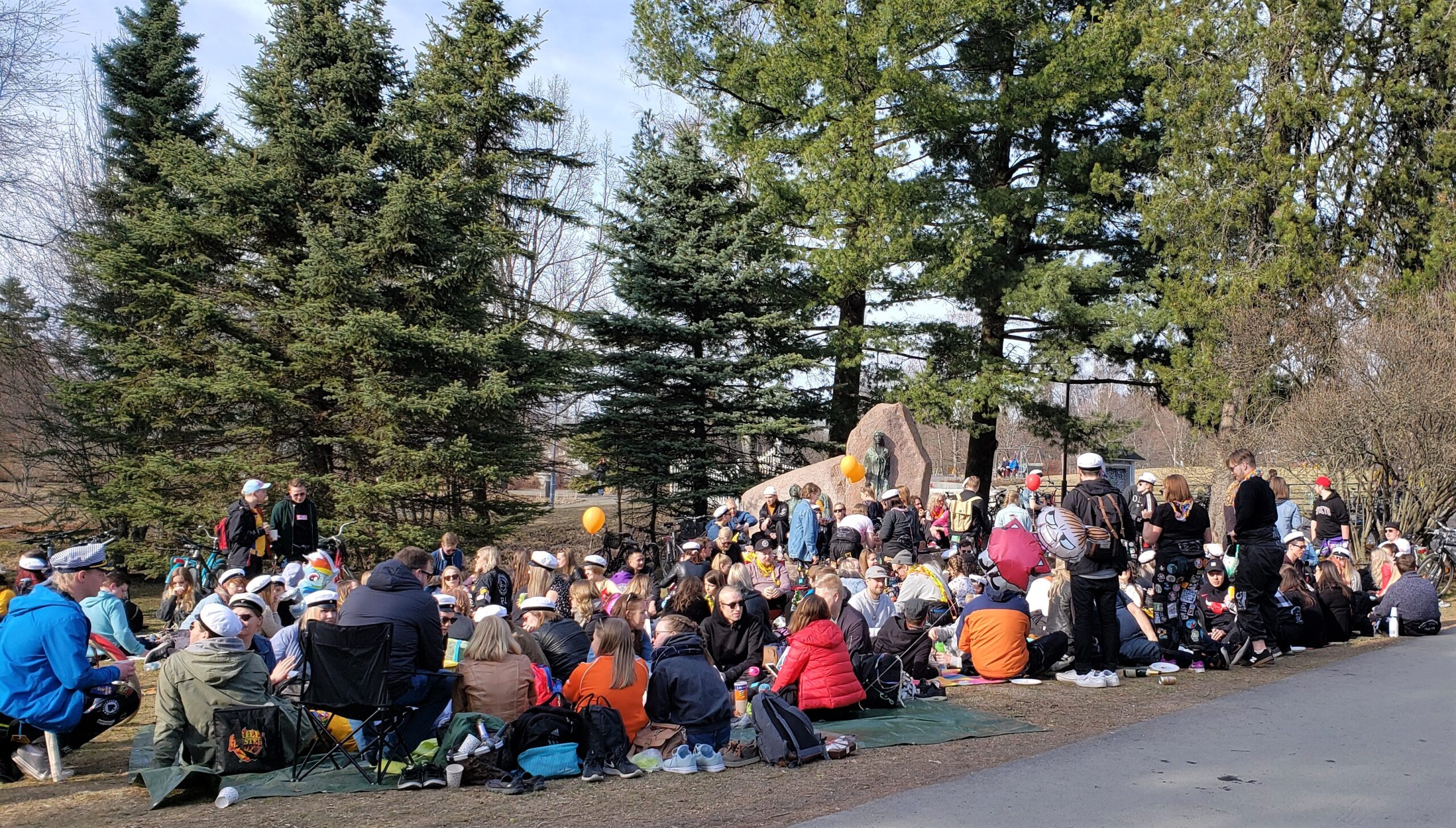
Fascinated by the weaseling segue… a little dark, sure, but eruditely rendered! And I remember that about dachsunds. Most of the ones I see around here were also not subjected to that particular experience! I don’t know that we have any spring celebration here. School has been cancelled for the rest of the year. We learned today that the spring sports season is also officially cancelled. Other rites of spring that are not happening this year: Spring road races, Baseball, Easter Parades.. but I have been running and hiking, and biking with the kids, and the kids are having a lot of outside time with their friends, 6 feet apart. So we are finding ways to adapt. Keep writing, you’re wonderful at it!
Fascinating post. In 2017 I was in Bad Sachsa, Germany for their Walpurgis night. Not far away in the Hartz Mountains about 5000 women gather once a year to chase out winter. Later during that trip, Brendan and I visited Walpurgishalle, https://en.wikipedia.org/wiki/Walpurgis_Hall that was built by my great uncle to house some of his paintings. It is really interesting to hear about the “witch legends” in Finland.